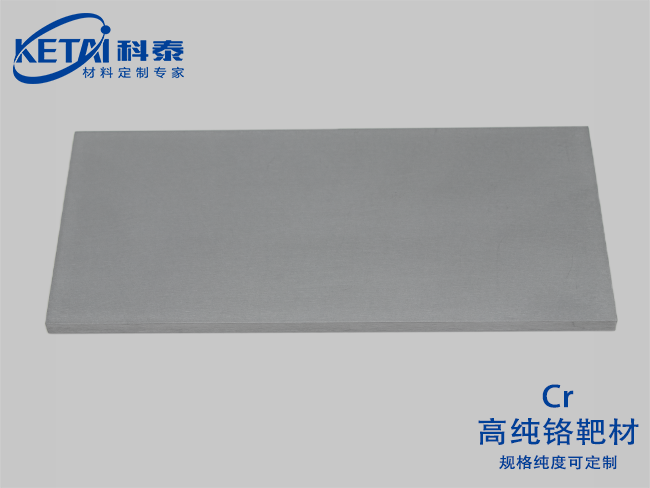-
-
Sputtering Targets
- Element Sputtering Targets
- Alloy Sputtering Targets
- Oxide Sputtering Targets
- Nitride Sputtering Targets
- Carbide Sputtering Targets
- Fluoride Sputtering Targets
- Silicide Sputtering Targets
- Sulfide Sputtering Targets
- Selenide Sputtering Targets
- Telluride Sputtering Targets
- Antimonide Sputtering Targets
- Phosphide Sputtering Targets
- Special Sputtering Targets Customization
- Sputtering Targets List
-
Evaporation Materials
- Element Evaporation Materials
- Alloy Evaporation Materials
- Oxide Evaporation Materials
- Nitride Evaporation Materials
- Carbide Evaporation Materials
- Fluoride Evaporation Materials
- Phosphide Evaporation Materials
- Telluride Evaporation Materials
- Selenide Evaporation Materials
- Sulfide Evaporation Materials
- Other Evaporation Materials
- Evaporation Materials List
- Compound Semiconductor Materials
- Rare Earth Materials
- Special Alloy
-
Crucible customization
-
Sputtering Targets
- H氢
- He氦
- Li锂
- Be铍
- B硼
- C碳
- N氮
- O氧
- F氟
- Ne氖
- Na钠
- Mg镁
- Al铝
- Si硅
- P磷
- S硫
- Cl氯
- Ar氩
- K钾
- Ca钙
- Sc钪
- Ti钛
- V钒
- Cr铬
- Mn锰
- Fe铁
- Co钴
- Ni镍
- Cu铜
- Zn锌
- Ga镓
- Ge锗
- As砷
- Se硒
- Br溴
- Kr氪
- Rb铷
- Sr锶
- Y钇
- Zr锆
- Nb铌
- Mo钼
- Tc碍
- Ru钌
- Rh铑
- Pd钯
- Ag银
- Cd镉
- In铟
- Sn锡
- Sb锑
- Te碲
- I碘
- Xe氙
- Cs铯
- Ba钡
- LaLu镧系
- Hf铪
- Ta钽
- W钨
- Re铼
- Os锇
- Ir铱
- Pt铂
- Au金
- Hg汞
- Tl铊
- Pb铅
- Bi铋
- Po钋
- At砹
- Rn氡
- La镧
- Ce铈
- Pr镨
- Nd钕
- Pm钷
- Sm钐
- Eu铕
- Gd钆
- Tb铽
- Dy镝
- Ho钬
- Er铒
- Tm铥
- Yb镱
- Lu镥
点击可查看包含对应元素的相关产品信息
科泰新材料可提供“元索周期表”近乎全元素(除放射性元素外)的任意组合材料定制,
部分产品未及时更新,特殊定制需求请咨询客服。
- Al铝
- Ar氩
- As砷
- Ag银
- Au金
- At砹
- Be铍
- B硼
- Br溴
- Ba钡
- Bi铋
- C碳
- Cl氯
- Ca钙
- Cr铬
- Co钴
- Cu铜
- Cd镉
- Cs铯
- Ce铈
- Dy镝
- Eu铕
- Er铒
- F氟
- Fe铁
- Ga镓
- Ge锗
- Gd钆
- H氢
- He氦
- Hf铪
- Hg汞
- Ho钬
- In铟
- I碘
- Ir铱
- K钾
- Kr氪
- Li锂
- LaLu镧系
- La镧
- Lu镥
- Mg镁
- Mn锰
- Mo钼
- N氮
- Ne氖
- Na钠
- Ni镍
- Nb铌
- Nd钕
- O氧
- Os锇
- P磷
- Pd钯
- Pt铂
- Pb铅
- Po钋
- Pr镨
- Pm钷
- Rb铷
- Re铼
- Rn氡
- Ru钌
- Rh铑
- Si硅
- S硫
- Sc钪
- Se硒
- Sr锶
- Sn锡
- Sb锑
- Te碲
- Sm钐
- Ti钛
- Tc碍
- Ta钽
- Tl铊
- Tb铽
- Tm铥
- V钒
- W钨
- Xe氙
- Yb镱
- Y钇
- Zn锌
- Zr锆
当前位置:首页 >> Products >> Sputtering Targets >> Element Sputtering Targets
- 产品类别
Chromium sputtering target(Cr)

| Chromium sputtering target(Cr)基本信息 | |
| 分子式 | Cr |
| 纯度 | 99.95% |
| CAS号 | 7440-47-3 |
| 摩尔质量 | 51.9961 |
| 密度 | 7.19 g·cm−3 |
| 熔点 | 2180 K,1907 °C,3465 °F |
| 沸点 | 2944 K,2671 °C,4840 °F |
| 溶解性(水) | |
Chromium sputtering target(Cr)产品概况
Chromium is the fourth transition metal found in the periodic table of elements, with an electronic configuration of [Ar] 3d54s1. Chromium is the first element in the periodic table where the ground state electronic configuration violates the recurrence principle. This phenomenon has also successively occurred in the electronic configuration of other elements, such as copper (Cu), niobium (Nb), and molybdenum (Mo). This phenomenon occurs due to the repulsion of two electrons in the same orbital domain. Elements that adhere to the principle of recursion require a significant amount of energy to transition electrons to higher energy levels, which is insufficient to compensate for the reduced energy caused by reducing the repulsive force between pairs of electrons; However, in 3D transition metals, the energy gap between the 4s orbital domain and the adjacent 3D orbital domain with higher energy levels is very small, while the 3D orbital domain has five equal energy levels, and its electrons with the same spin can be exchanged to reduce energy and achieve stability. Taking chromium as an example, according to the recursion principle, the electronic configuration should be [Ar] 4s23d4. However, if the electronic configuration is [Ar] 4s13d5, making both the 4s and 3d orbital domains appear semi filled, it can reduce energy and make it more stable.
| Chromium sputtering target(Cr)产品应用 |
Most of them are used to make special steel such as stainless steel, such as automotive parts, tools, magnetic tapes, video tapes, kitchen knives, and other kitchen supplies. "It can enhance the strength of steel and has excellent heat resistance. It is used in the manufacture of superalloys (ultra heat and corrosion resistant alloys) for aircraft engines and nuclear power equipment, as well as in plating and other applications.".
Chromium plating is divided into two categories: protective and decorative chromium plating and wear-resistant chromium plating. The former is to prevent rust on the base metal and beautify the appearance of the product, while the latter is to improve the hardness, wear resistance, corrosion resistance, and temperature resistance of mechanical parts. The chromium plating layer has high hardness and low friction coefficient. Decorative chromium plating involves plating a 0.25 to 2um chromium layer on a bright substrate. Porous chromium is mainly used in the inner cavity of cylinders and piston rings to improve the wear resistance of parts by using the lubricating oil sucked in by its micropores. Black chrome plating is used on parts that require matting and wear resistance. Milk white chromium plating is mainly used for various measuring tools.
Chromium can be used to make pigments such as "chrome green" and "chrome yellow".



















